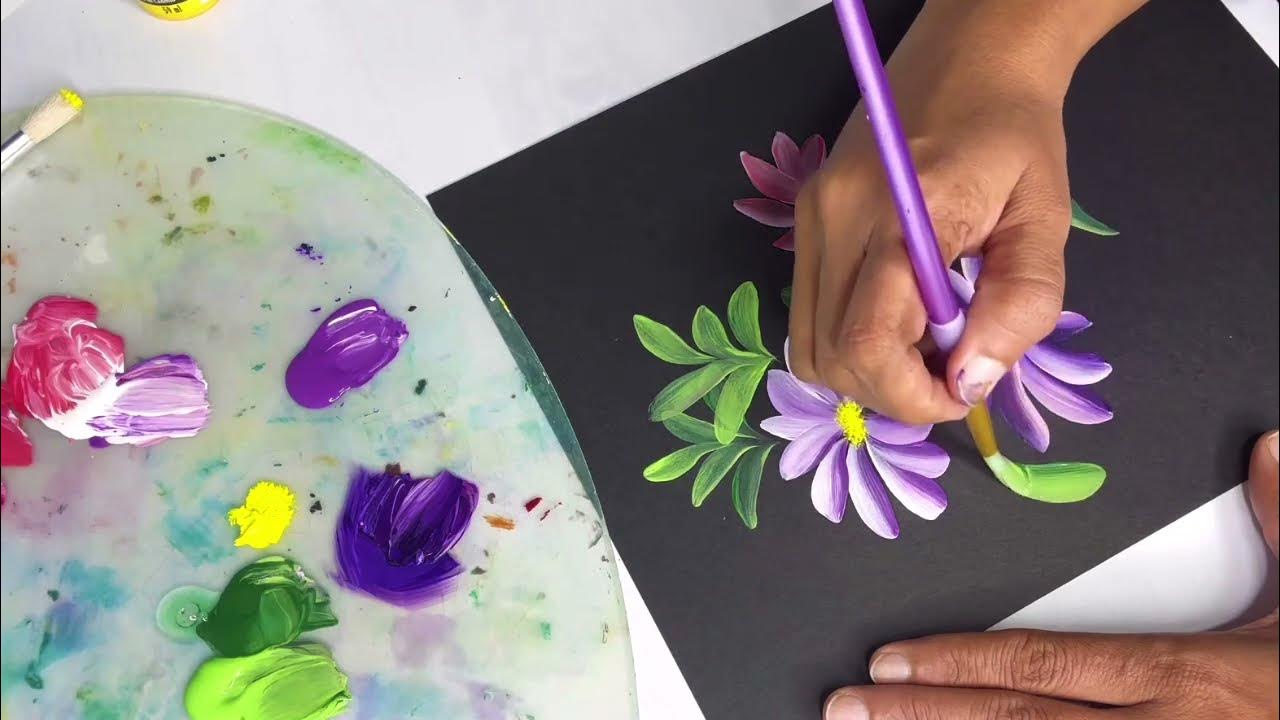New to Flower Painting? Start with the Right Tools
Oil painting flowers can look like a big task, but honestly—it becomes way easier when you’ve got the right brushes and a solid color palette. You don’t need to break the bank or get 30 different tubes of paint. Just a few smart choices can change everything.
Let’s walk through the brushes and colors that make flower painting feel less stressful and way more fun.
🖌️ Best Brush Types for Flowers
Not all brushes are created equal. When painting florals, brush choice affects how soft or sharp your petals and leaves look. Here’s a breakdown of what really helps:
1. Filbert Brushes (Size 4 to 8)
These are your best buddies for creating round petal shapes. Their curved edge gives you a soft yet defined line, perfect for roses, peonies, and tulips.
2. Round Brushes
Ideal for detailing smaller elements like thin stems or veins on petals. Use a size 0–2 for those fine touches.
3. Flat Brushes
Need to block in background or base layers quickly? Flats are great. They give strong, angular strokes, useful when shaping leaves or background forms.
4. Fan Brushes (optional)
While not required, fan brushes can be useful for texture or soft blending, especially in wildflower fields or textured petals.
Brush Tip:
Stick with synthetic bristles for better spring and easier cleaning—unless you’re working with super thick paint and want hog hair.
🎨 Simple Color Palette for Floral Beginners
Painting florals doesn’t need a rainbow. Here’s a compact palette that works beautifully:
- Titanium White – You’ll use this a lot to mix tints and highlights
- Cadmium Red Light – For warm floral tones (roses, poppies)
- Alizarin Crimson – Adds depth to petals and shadows
- Cadmium Yellow Medium – Great for sunflowers and warm blends
- Ultramarine Blue – Mixes cool shadows and background tones
- Sap Green – Ideal for stems and leaves
- Burnt Sienna – Good for neutralizing other colors and creating shadows
- Dioxazine Purple (optional) – Adds richness to flower shadows or contrast areas
🎯 Pro Tip: Mix Don’t Match
Instead of copying flower colors exactly from a reference photo, try to mix your own versions. This keeps your painting feeling fresh and painterly.
For example, blend Cad Red + White to get a soft pink. Or Yellow + Ultramarine for natural greens. Over time, you’ll create your own signature flower tones.
💡 Make It Easy – Use Midtones First
Here’s what helps: start with the middle tones of your flower petals. Don’t jump straight to highlights or shadows. Once the base is in, gently layer lights and darks on top.
This layering method keeps your colors clean and prevents that dreaded “muddy” look.
⚠️ Don’t Forget to Clean Brushes Often
Paint build-up ruins brush shape fast. Wipe your brushes between color switches, and give them a deep clean after each session. Dirty brushes lead to dull paintings.
Wrapping It Up
You don’t need a thousand tools or colors to paint beautiful flowers. Start simple: filberts, flats, and a warm-cool-balanced palette. With time and play, you’ll discover your personal favorites.
Just get painting. The more you play, the better you get.
